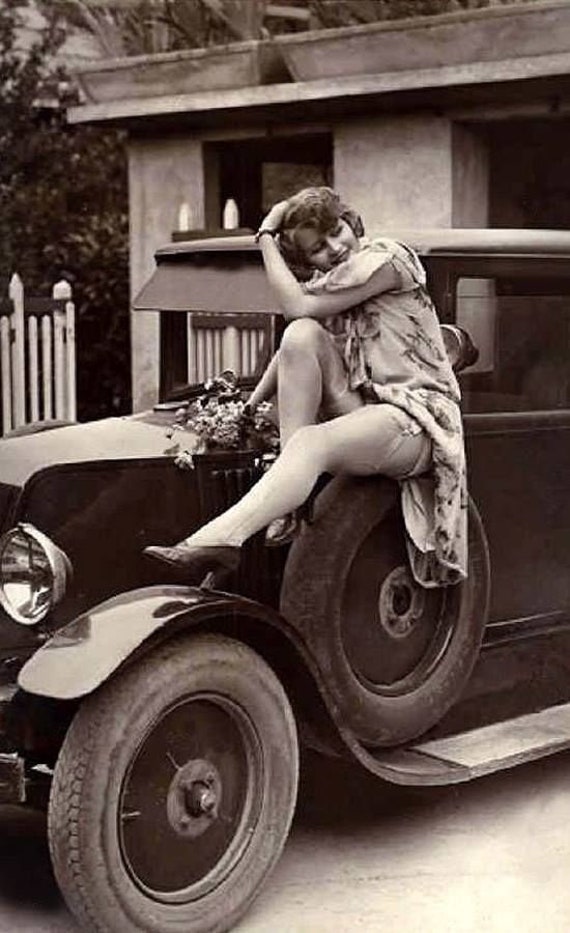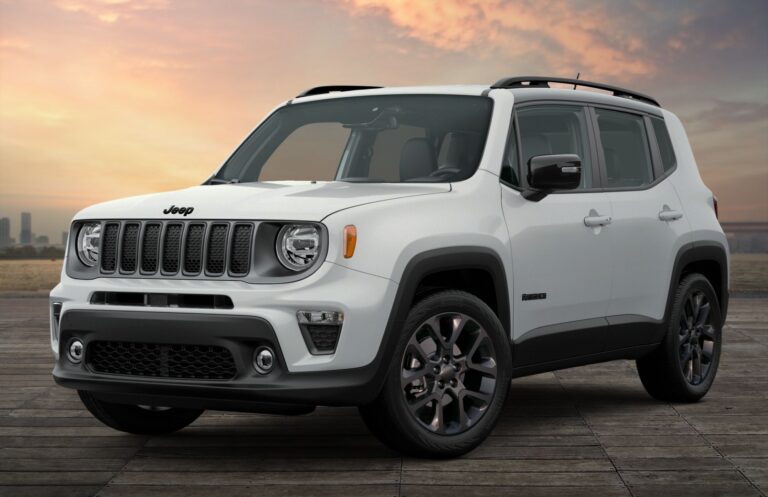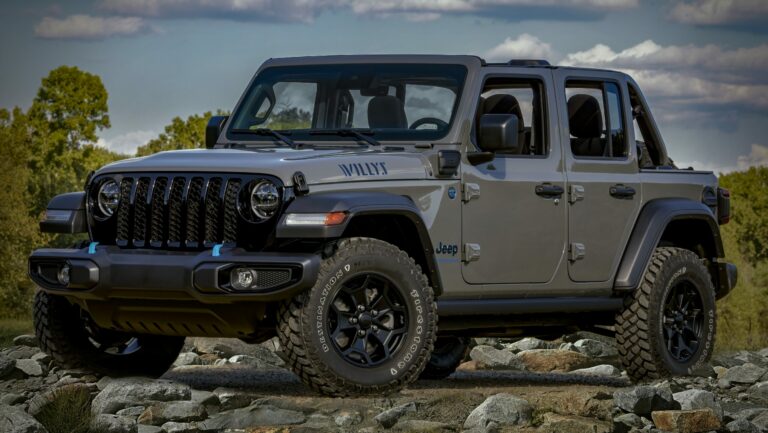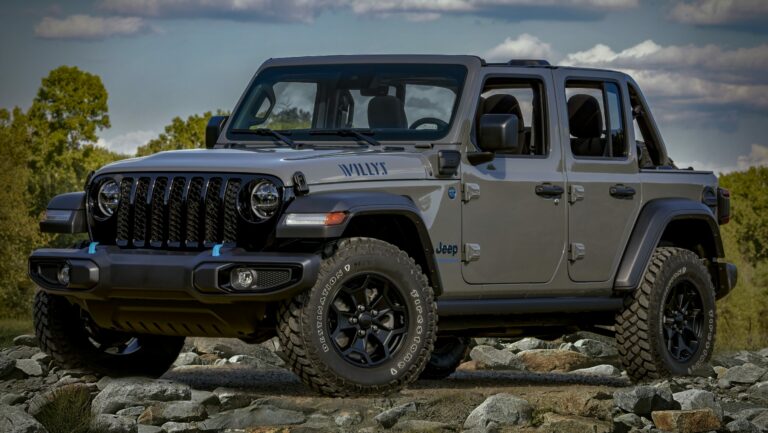Vintage Jeep Wagoneer For Sale: A Comprehensive Buyer’s Guide
Vintage Jeep Wagoneer For Sale: A Comprehensive Buyer’s Guide /jeeps.truckstrend.com
Introduction: The Enduring Allure of a Classic Icon
The Jeep Grand Wagoneer is more than just a vintage SUV; it’s a rolling piece of Americana, a testament to a bygone era of automotive design where luxury met rugged capability with an unmistakable style. Long before the term "SUV" became commonplace, the Wagoneer, first introduced in 1963, pioneered the concept of a comfortable, family-friendly vehicle that could also tackle rough terrain. Its most iconic iteration, the SJ-platform Grand Wagoneer produced from 1984 to 1991, solidified its legendary status with its distinctive woodgrain paneling, plush interiors, and robust AMC V8 engine.
Vintage Jeep Wagoneer For Sale: A Comprehensive Buyer’s Guide
Today, the desire for a vintage Jeep Wagoneer for sale is surging. It’s a vehicle that evokes nostalgia, commands respect on the road, and offers a unique driving experience unmatched by modern vehicles. For many, it represents a return to simpler, more characterful motoring, a blend of classic charm and surprising practicality. However, purchasing a vintage vehicle, especially one as complex and beloved as the Wagoneer, requires careful consideration, informed decisions, and a clear understanding of what you’re getting into. This comprehensive guide will navigate you through the exciting journey of finding, evaluating, and ultimately owning your dream vintage Grand Wagoneer.
The Enduring Appeal of the Grand Wagoneer: More Than Just a Car
What is it about the Grand Wagoneer that continues to captivate enthusiasts and casual admirers alike? Its appeal lies in a unique confluence of factors:
- Iconic Design: The faux wood paneling, the upright stance, the chrome grille, and the distinctive proportions are instantly recognizable. It’s a design that has transcended trends, remaining timeless and cool.
- Pioneer of Luxury SUVs: The Wagoneer offered features unheard of in its era for a 4×4, including power windows, air conditioning, automatic transmissions, and sumptuous leather or cloth interiors. It truly set the standard for the luxury SUV segment decades before it became mainstream.
- Robust Engineering: Built on a heavy-duty truck chassis, the Wagoneer was designed to be durable and capable. Its AMC V8 engines (primarily the 360 cu in) and various four-wheel-drive systems (like the legendary Quadra-Trac) provided reliable power and impressive off-road prowess.
- Nostalgia and Lifestyle: For many, the Wagoneer embodies a sense of adventure, family road trips, and a connection to a simpler time. It’s a vehicle that sparks conversation and turns heads wherever it goes, often serving as a statement of individuality.
- Growing Collectibility: As a relatively limited production vehicle that paved the way for an entire automotive segment, well-preserved or restored Grand Wagoneers have seen a significant appreciation in value, making them attractive to collectors and investors alike.

What to Look For: Key Considerations When Buying a Vintage Wagoneer
Purchasing a vintage Wagoneer is not like buying a new car. It requires a keen eye, patience, and a willingness to understand the common quirks and potential issues that come with a vehicle of its age. A thorough inspection is paramount.
-
Rust, Rust, Rust: This is often the Wagoneer’s biggest enemy.
- Frame: Inspect the entire frame for excessive surface rust, perforations, or botched repairs, especially around the rear leaf spring mounts and body mounts.
- Body Panels: Pay close attention to rocker panels, lower door sills, rear quarter panels (behind the wheels), tailgate (inside and out, particularly the lower edge), and floorboards. Water can seep into the cabin and cause rust from the inside out.
- Roof and Drip Rails: Check for rust under the roof rack mounts and along the drip rails, which can lead to leaks.

-
Engine (AMC 360/401 V8 or 258 I6):
- Leaks: Oil leaks are common but check for excessive leaks from the valve covers, oil pan, rear main seal, and power steering pump.
- Performance: Listen for knocks, ticks, or unusual noises. Check for blue smoke (oil burning) or white smoke (coolant). Ensure it starts easily and idles smoothly.
- Carburetor: Many still run their original carburetors, which can be finicky. Look for signs of proper tuning or if it needs a rebuild.
- Vacuum Lines: These are notorious for drying out and cracking, leading to poor performance, rough idle, and issues with HVAC controls.
-
Transmission (TorqueFlite 727/904 Automatic):
- Shifting: Test all gears, including reverse. Shifts should be smooth, not harsh or delayed.
- Fluid: Check the transmission fluid level and color. Burnt smell or dark color indicates issues.
-
Transfer Case (Quadra-Trac, Selec-Trac, Command-Trac):
- Functionality: Test all 4WD modes. Ensure the vacuum lines for engagement are intact and working. The Quadra-Trac system (full-time 4WD) requires specific fluid and proper maintenance.
- Leaks: Check for fluid leaks from the seals.
-
Suspension and Steering:
- Bushings: Inspect all suspension bushings for cracks or wear.
- Steering Play: Excessive play in the steering wheel indicates worn steering box, tie rods, or ball joints.
- Power Steering: Check for leaks from the pump and hoses.
-
Interior and Electrical:
- Wood Trim: The dashboard and door panel wood trim can peel or crack.
- Upholstery/Headliner: Check for tears, stains, and sagging headliners (a very common issue).
- Power Windows: These are notoriously slow or non-functional due to worn motors and regulators. Test all of them.
- HVAC: Test the air conditioning and heater. Parts for these systems can be costly to replace.
- Wiring: Look for any signs of aftermarket wiring, splices, or frayed wires, which can lead to electrical gremlins.
-
Documentation: Service records, previous owner history, and a clear title are invaluable. They can tell you a lot about how the vehicle was maintained.

Navigating the Market: Where to Find a Vintage Wagoneer For Sale
The market for vintage Grand Wagoneers is robust, with several avenues for finding your ideal vehicle:
- Specialized Classic Car Dealerships: Many dealerships specialize in vintage SUVs and classic American cars. They often offer higher-quality, often restored, examples, but at a premium price. They may also provide warranties or post-sale support.
- Online Auction Platforms:
- Bring a Trailer (BaT): Known for curated, high-quality listings with extensive photo galleries, detailed descriptions, and active comment sections. Prices here tend to be at the higher end of the market for well-sorted examples.
- eBay Motors: A wide range of conditions and prices, from project cars to decent drivers. Be cautious and request detailed photos and information.
- Hemmings: A long-standing marketplace for classic cars, offering both private and dealer listings.
- General Online Marketplaces:
- Facebook Marketplace: A surprisingly good source for local listings. You’ll find everything from barn finds to nicely kept drivers. Use specific search terms like "Jeep Wagoneer" or "Grand Wagoneer."
- Craigslist: Similar to Facebook Marketplace, good for local finds but requires vigilance against scams.
- Forums and Enthusiast Clubs: Websites like "IFSJA.org" (International Full Size Jeep Association) or dedicated Grand Wagoneer Facebook groups often have "for sale" sections. These communities are invaluable for advice and direct peer-to-peer sales.
- Auctions (Live): Major auction houses occasionally feature Grand Wagoneers. This can be a good way to find high-end, professionally restored vehicles, but be prepared for competitive bidding and buyer’s premiums.
Understanding the Condition Tiers and Pricing
The price of a vintage Jeep Wagoneer for sale varies wildly depending on its condition, mileage, originality, and the year of manufacture. It’s helpful to categorize them:
- Project Cars ($5,000 – $15,000): These are vehicles that require significant mechanical, body, and interior work. They might be non-running, have extensive rust, or be missing components. Ideal for someone with a strong mechanical aptitude, a large budget for restoration, or a desire for a long-term passion project.
- Driver Quality ($15,000 – $35,000): These Wagoneers are typically running and driving, with some functional issues, cosmetic flaws, or signs of wear and tear. They can be enjoyed immediately but will likely require ongoing maintenance and perhaps some restoration work in the future. This is where most buyers start.
- Well-Maintained/Original ($35,000 – $55,000): These examples have been consistently cared for, show minimal rust, have a largely intact interior, and are mechanically sound. They may not be perfectly restored but are excellent, reliable examples of the breed. Low mileage and desirable color combinations can push prices higher.
- Restored/Concours Quality ($55,000 – $100,000+): These are vehicles that have undergone professional, frame-off restorations, or are exceptionally well-preserved, low-mileage original examples. Every component is typically in excellent working order, and cosmetics are near-perfect. These command top dollar and are often considered investments.
The Ownership Experience: Maintenance and Upgrades
Owning a vintage Wagoneer is an experience, not just a transaction. While they are robust, they are also old.
- Parts Availability: Surprisingly good! Due to the Wagoneer’s long production run and shared AMC/Jeep components, many mechanical and trim parts are still available, either new old stock (NOS), reproduction, or from specialized aftermarket suppliers. Online communities are excellent resources for finding specific parts.
- Common Maintenance: Be prepared for regular fluid changes, addressing vacuum leaks, replacing worn bushings, and tending to the aging electrical system. A good mechanic familiar with older American vehicles is invaluable, or be prepared to learn to do much of the work yourself.
- Popular Upgrades:
- EFI Conversion: Swapping the carburetor for a modern electronic fuel injection system (e.g., Holley Sniper, FiTech) dramatically improves reliability, cold starts, and fuel economy.
- Modern AC: Upgrading to a more efficient R134a-compatible AC system.
- Suspension: Lift kits are popular for increased off-road capability and a more aggressive stance.
- Brakes: Upgrading to disc brakes on all four wheels for improved stopping power.
- Sound System: Modernizing the audio while maintaining a vintage look.
The Investment Perspective: Is a Wagoneer a Good Investment?
For well-preserved, low-mileage, or professionally restored examples, the answer is increasingly yes. Grand Wagoneer values have been steadily climbing over the past decade, outpacing many other classic SUVs. Their unique blend of luxury, utility, and classic Americana ensures continued demand. However, a "project car" Grand Wagoneer, while cheaper to acquire, can quickly become an expensive money pit if not approached with a clear budget and realistic expectations. The best investment is typically one that is already in excellent shape or has been professionally restored.
Practical Advice and Actionable Insights
- Set a Realistic Budget: Don’t just factor in the purchase price. Allocate a significant portion of your budget (20-50% of the purchase price, or more for projects) for immediate repairs, deferred maintenance, and potential upgrades.
- Get a Pre-Purchase Inspection (PPI): Unless you are an expert mechanic, hire a reputable classic car specialist or a mechanic familiar with older Jeeps to perform a thorough inspection before you buy. This can save you thousands down the line.
- Join the Community: Before, during, and after your purchase, engage with online forums and Facebook groups dedicated to Grand Wagoneers. They are an invaluable source of knowledge, troubleshooting tips, and parts suppliers.
- Don’t Rush: There are many Wagoneers for sale. Take your time, inspect multiple vehicles, and be prepared to walk away if something doesn’t feel right.
- Understand Your Skill Level: Be honest about your mechanical abilities. If you’re not comfortable with hands-on work, factor in the cost of professional labor.
Vintage Jeep Wagoneer Price Table (Estimated, USD)
| Condition Tier | Model Year Range (approx.) | Price Range (USD) | Key Characteristics |
|---|---|---|---|
| Project Car | 1980-1991 | $5,000 – $15,000 | Non-running, significant rust, major mechanical/electrical issues, missing parts, needs full restoration. |
| Driver Quality | 1980-1991 | $15,000 – $35,000 | Running/driving, functional but with noticeable flaws (cosmetic wear, minor mechanical issues, some rust). |
| Well-Maintained | 1984-1991 (Late SJ) | $35,000 – $55,000 | Good running condition, minimal rust, largely original interior, well-documented maintenance. Ready to enjoy. |
| Restored/Concours | 1984-1991 (Late SJ) | $55,000 – $100,000+ | Professional frame-off restoration or exceptionally low-mileage original. Near-perfect condition in all aspects. |
| Early SJ Wagoneer | 1963-1979 (Various trims) | $10,000 – $45,000+ | Less common, often more basic than Grand Wagoneer. Prices vary wildly based on originality, rarity, and condition. |
Note: Prices are highly dependent on factors like mileage, engine originality, transmission type, specific features (e.g., power seats, sunroof), geographical location, and current market demand.
Frequently Asked Questions (FAQ)
Q1: Why are vintage Grand Wagoneers so expensive now?
A1: Their rising popularity is due to their iconic status, unique blend of luxury and utility, and limited availability of well-preserved examples. They’ve become desirable collector’s items and a symbol of classic American automotive design.
Q2: Are parts hard to find for a vintage Wagoneer?
A2: Surprisingly, no. Many mechanical parts are shared with other AMC/Jeep vehicles from the era, and there’s a strong aftermarket and reproduction parts industry. Interior and specific trim pieces can be harder to source but are generally available through specialized suppliers or used parts.
Q3: Are they reliable as a daily driver?
A3: With proper maintenance and potentially some key upgrades (like EFI), a well-sorted Grand Wagoneer can be a reliable daily driver. However, remember it’s a 30+ year old vehicle; it will require more attention and regular maintenance than a modern car.
Q4: What kind of gas mileage do they get?
A4: Not great. Expect anywhere from 10-15 MPG, depending on the engine, drivetrain, and driving conditions. Upgrading to EFI can marginally improve this.
Q5: What’s the difference between a Wagoneer and a Grand Wagoneer?
A5: "Wagoneer" was the original nameplate for the SJ-platform vehicle introduced in 1963. The "Grand Wagoneer" designation was introduced in 1984 as the top-tier, luxury trim level, becoming the sole Wagoneer model from 1987-1991. When people refer to the iconic wood-paneled SUV, they’re almost always talking about the Grand Wagoneer.
Q6: Can I restore a Grand Wagoneer myself if I have limited mechanical experience?
A6: A full restoration is a massive undertaking requiring specialized tools, knowledge, and significant time. While basic maintenance and minor repairs are achievable for a novice, a complete restoration is best left to experienced DIYers or professionals. Start with a "driver quality" vehicle if your experience is limited.
Conclusion: The Journey Awaits
The quest for a vintage Jeep Wagoneer for sale is more than just buying a vehicle; it’s an embarkation on a journey into classic car ownership. It’s about appreciating a unique piece of automotive history that blends rugged utility with an undeniable sense of luxury and style. While the path to ownership requires diligence, careful inspection, and a realistic understanding of the commitment involved, the rewards are immense.
From the admiring glances it draws to the comfortable ride and the strong community of fellow enthusiasts, owning a Grand Wagoneer is a truly distinctive experience. Whether you seek a pristine showpiece, a reliable weekend cruiser, or a challenging restoration project, the timeless appeal of this iconic SUV ensures that your investment in a vintage Jeep Wagoneer will be one of passion, pride, and enduring enjoyment. Start your search today, and prepare to join the ranks of those who understand the magic of the Grand Wagoneer.







